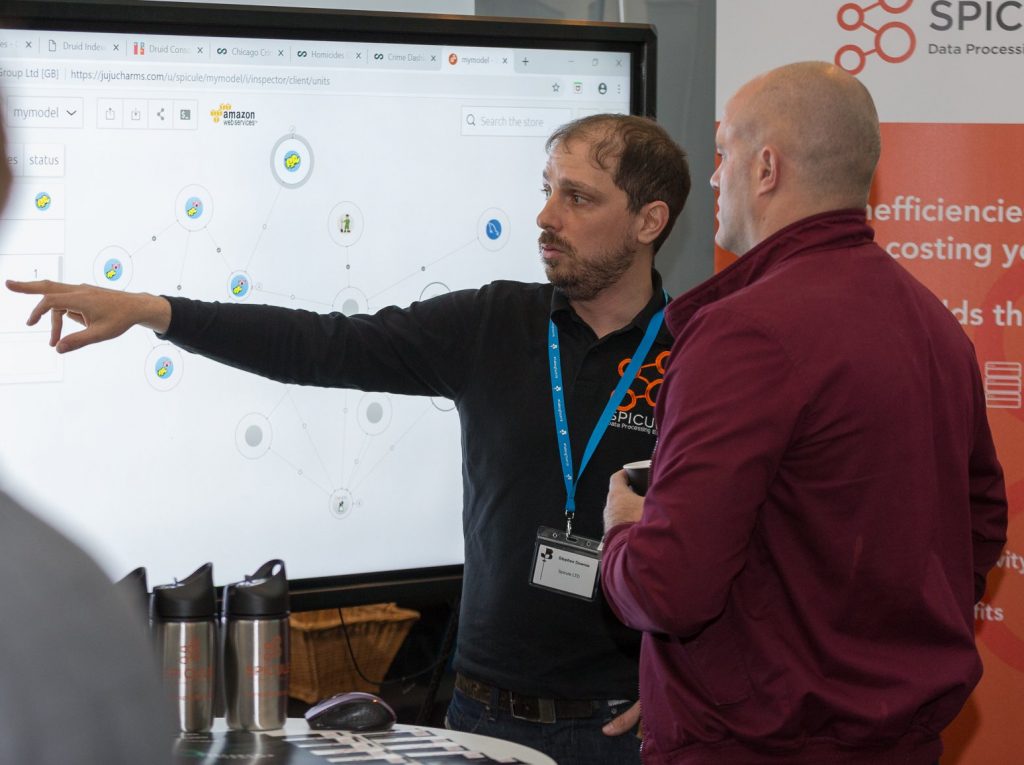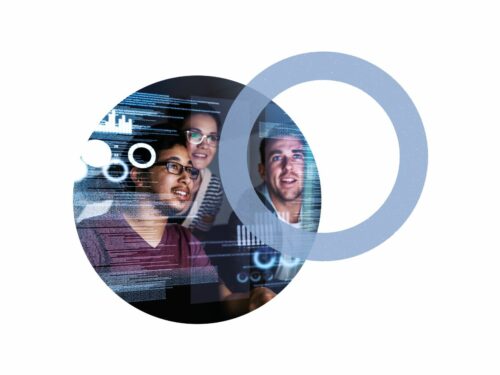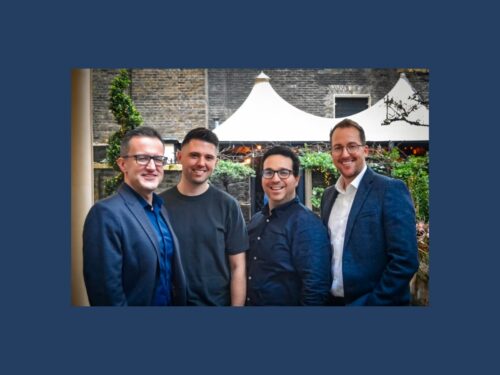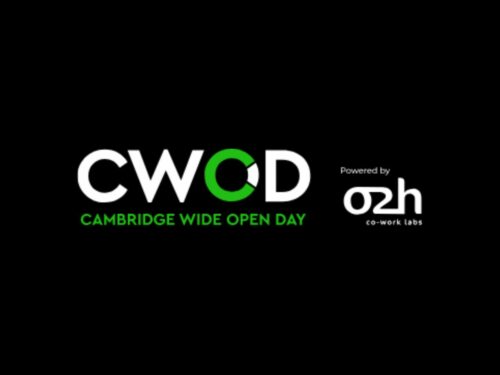If you are struggling to train and retain your technicians, then you might need Netmatters’ Skills Bootcamp. Our...
Member Spotlight – Spicule
What are the benefits and challenges of building a business model around open source software? And how can you demonstrate your value to potential clients who many not understand what’s possible?
We caught up with Stephen Downie, Technical Project Manager at Spicule to learn more about their approach to data analytics and their commitment to open source software.

Hi Stephen, can you tell us a little bit about Spicule? How did it begin?
Spicule is a data analytics company specialising in open source software. We are based in Long Stratton, Norfolk and also work out of Incubyte in Cambridge. We also have offices in North and South America. Spicule was shaped by the knowledge of our founder, Tom, who has worked in IT within the business intelligence sector for the past decade. During this time, Tom witnessed some questionable approaches to data processing. Tom wanted to help businesses by building systems that enabled them to access their data.
For Tom, it all began when he developed analytics platform, Saiku. He wrote this platform and made it open source. It was a fantastic way to highlight to current management that there were other options out there, while still working in the industry. Within a few clicks, you can retrieve the metrics you are looking for with Saiku, without sifting through reams of paper and spreadsheets. Our ethos as a company is to make data easier and more accessible, to allow end users to understand it.
We work in an evolving industry. Ten years ago, people worked from Excel spreadsheets. These days, we work with our clients to run reports that visualise what’s happening. This answers their questions and allows them to make fact-based decisions.
How has your involvement in open source software shaped your company ethos?
95-100% of what we do is open source. Doing this opens up a much larger talent pool of developers. We are still quite a small business. If a client has a specific requirement, we can either use software we have written ourselves, or access and alter open source solutions to make sure we offer our client the right thing. Because we are so committed to living the open source ethos, we always commit back our changes. If we notice a security flaw, we will patch it and take that back upstream to the original developers, so the next person to download the software will have a more secure, patched version. For our clients, it ensures we use the right tool for the job.
Is there any risk to giving back software?
Not at all. This is a common thought. People think there must be security issues because the code is out in the world. But if you think about it – we’re a small team, we don’t have an abundance of developers looking at platforms. Suppose something bad happened. Say, a hacker got in. There’s always a possibility we wouldn’t see it, and someone could extract information. But the advantage of open source means that this bit of software has thousands of users and you would hope this allows developers to catch vulnerabilities early. It’s a community.
We do an awful lot with software from the Apache Software Foundation. We’ve been committed to that for several years on platforms originally written by companies such as NASA. It can be difficult to explain that you could use a bit of software NASA wrote and it’s completely open source. People immediately tend to imagine the risks involved. But there are clear signs that open source is becoming more accepted. Microsoft and Google are now investing heavily in open source. Other people are bringing new ideas. The negative side is that we can see there are people pulling down the source code without giving back. Netflix and Amazon have done that to our code. There’s no agreement that says you have to push changes back. So, some parties keep their changes closed source. Across the board, however, our community functions very well!
Does your commitment to open source affect your business model?
Building a business around open source is definitely a challenge. Selling an off-the-shelf platform that is licensed would certainly be more straightforward. But we’re confident in our model. A lot of our business has come from offering consultancy and support around the open source software. Naturally, we know it very well. We can offer value through our expert knowledge.
We love having conversations with those using our software – to see how they’re using it and whether there’s any support we can offer. We don’t see it as a risk. We see it as a challenge.
Do you find that clients have a good grasp of your offering?
An awful lot of the time, when you say analytics to clients, they misunderstand – they think Google Analytics, Twitter analytics and so on. That is the end of analytics for some companies. But the scope of what you can do with analytics is huge.
For example, think of a retail outlet. You can monitor footfall, hourly sales and KPIs, but those systems don’t allow you to plug into other data sources as standard. I have worked in this industry for a long time. How do you get a better understanding of what happens to your store, say, if there is a thunderstorm, or it snows or there are road closures etc – how does that affect your business? You can look at previous years’ sales, but then you aren’t implementing any external factors. Retail is often culpable of that kind of thinking. They might set a 20% increase on last year as a KPI without truly understanding where that forecast comes from. With a richer picture of the data, you can start to understand how you can forecast, make predictions, and understand how to best structure staffing.
That’s just one industry. Every industry has its own unique challenges. Companies don’t tend to know how much they can benefit from a tailored, specialised solution. But it has to go beyond ‘this is what we see’ and ‘this is what we extract out of Excel spreadsheet!’
How do you know which clients you want to work with?
It’s really companies and organisations with data that we look for. It doesn’t make sense for us to target clients based on their industry. We try not to limit ourselves. Ultimately, we don’t need to understand the business – we understand the data. We aim to deliver it to people who do understand their business so they can make informed decisions to take them forward.
And we don’t only work with businesses that are looking to increase revenues. We also work with research organisations to make their lives easier. It isn’t always about the bottom line. We can offer researchers more efficient platforms to perform work quicker and more accurately. We’d love to have a chat with any organisation that is sitting on unused data. We’re confident we can improve data strategies.
You’ve worked with NASA, but at the other end of the scale, you create bespoke solutions for small businesses, such as Norwich-based branding agency, All is Flux. How does your approach differ when working with organisations of different sizes?
We try not to change our approach. We like to know we offer the same service to a one-man band as we do to a multinational. Larger organisations might have more specific requirements and larger data volumes. When we work with NASA, we don’t change our process at all. We still go through the fact-finding stage. We make sure we understand what their pains are, what they’re looking to fix, what answers they want, what outputs they need. And we try to keep this approach the same across the board. We don’t want to offer preferential treatment based on size.
What are the biggest challenges in your sector?
For us, it’s probably the fact that the tech industry changes at an astronomical rate. Standards change overnight – that might sound a bit extreme, but it feels that way sometimes! New tech and new ways to do things sometimes feel just out of reach. Keeping up to date is a key challenge.
Finding and retaining talent is a big challenge, too. Wherever you’re based, the new talent gets sucked up so quickly by the larger companies. Aviva is based in Norwich, and they bring a lot to the community, but when looking for developers, it’s hard for a smaller business to compete with a huge company like that. But this is a problem all over. This is one of the reasons open source is so vital to our business – there are people all over the world who can improve our software.
Last year you took on two interns, Tim and Ryan. What do interns bring to your company?
Before moving to our office in Long Stratton, we were in the Enterprise Centre at UEA. That was a great base that allowed us access to the new talent coming fresh out of university. We got involved in UEA’s internship programme. It’s a vital tool for us. Interns offer a fresh outlook, whether they’re studying or recently qualified. They tend to be very mouldable and they are always looking to gain new skills. They don’t have the barriers you might see with an experienced developer who have their own way of doing things and believe that’s the only way.
And things change so much! Having an intern who is keen to learn new skills fits with what we do as a business. They’re at the start of their career journey, so they take advantage of every opportunity to develop skills to take into the wider world.
Another great benefit is that our interns are learning things at university that we don’t have as internal knowledge. As much as we impart, we gain a lot of information and skills too, and they open our eyes to other avenues. We brought Ryan on for an extended period after his internship and Tim took a role at Aviva. It’s difficult to compete with what they can offer in terms of packages.
Tell us about your involvement in this year’s dev://east developer conference.
dev://east is a fantastic conference. We’ve known Emily [who organises the event] for a number of years. We’ve always been amazed by the quality of events she organises. We had a speaking slot in 2018. That was the first time we had been to Suffolk and explored the tech scene there. We felt like we were surrounded by peers. When the opportunity came up this year to be a gold sponsor, we didn’t hesitate. Our founder, Tom, gave a great talk on the main stage.
What were the advantages of having a stand at dev://east?
It allowed us to show off what we’re working on, and what’s possible with analytics. We don’t talk to an awful lot of techies; we tend to talk to the business folk. They need to know in human speak what’s going on. They don’t really care how you do it. We’re brought in to take care of the how. They just want to know why you’re doing it, why we’d use you. And what’s the output? The how is insignificant to them. As soon as you start talking about how it’s done, they turn off, because it means nothing to them. They can’t picture how it will work in their business.
For dev://east, we built a platform on a F1 racing game, brought a seat and a wheel, and invited people to come to the stand and do a couple of laps around Silverstone. We wrote a simple Python app that extracted names and times to build a leader board, showed various metrics, average speed, braking times, gears and so on. All of that was displayed on the dashboard. It was a great way to get people to understand what’s possible, because when you say we do data analytics and processing, people switch off!
Having something people could interact with was amazing. While it was fun, there was real telemetry coming out of the video game. That was so useful to get the delegates to see what we can do. If you take away the F1 game, you could put your own business in there and imagine what you could get on that dashboard. It highlights the potential of real-time analytics. The whole event was absolutely phenomenal. We’ll definitely be involved again next year.
One of the comments from last year’s dev://east conference was “Wow, I never imagined I’d come to see a speaker who works for NASA and lives in the East of England!” What are the benefits of being located here?
The business was originally based in London, but we moved out to Norfolk. The costs of being in London are astronomical. In the industry we’re in, there’s a lot of pressure to make things happen immediately. You end up chasing the work rather than working with the people you know you can benefit, just so you can cover your overheads.
The move to Norfolk has offered us a fantastic work-life balance. We find ourselves surrounded by some of the nicest countryside the country has to offer – and I’ve seen a lot of parts so I can say that! We’ve got an affordable place to work, and the transport links are fantastic. You can still be in Liverpool Street within two hours. It doesn’t exclude us from working with clients in London. And it’s just an hour to Cambridge. We’ve recently expanded into a hot desk over there at the Innovation Park. Taking space there has allowed us to interact with some amazing smaller and international businesses.
We have found some big benefits to working out of the big cities and in the East of England. Events such as dev://east and organisations such as Tech East are leading. They see the challenges as well as the advantages, and they’re trying to close that gap. It’s in everyone’s interest to grow the tech scene here – otherwise it will all be absorbed into London.
You joined Tech East at an early stage. What made you want to get involved?
We have had varying levels of success with networking groups and organisations like the Chamber in Norwich. The Chamber has quite a wide spread of businesses involved. When we heard about the Tech East launch, we did our research. We liked that Tech East was tech focused and at an early stage at the time we joined. It was important to us to be involved at an early stage, as we felt we could bring something to the table that would encourage other members to join.
Tech East sold themselves very well! We didn’t have an office in Cambridge then, so gaining workspace in London was great. With hot desking at the Tech East London Embassy, when we have meetings with clients in London we actually have an office to invite them to rather than a random Costa! There are a lot of perks for an affordable membership. And it was nice to see them when we were exhibiting down at dev://east – Tim came and tried our F1 game. Hopefully, Tech East is going to continue to support the scene. We feel like we need to be involved and be part of it. It’ll be interesting to see how it develops over the coming months!
What’s the next big thing in data?
IoT [Internet of Things] is blowing up. Connected devices and smart homes are becoming huge. Being able to process your analytics and gain insights in real-time is a game-changer. Imagine a wind farm with sensors. You’d want to know immediately if something wasn’t functioning. But without analytics coming from the sensors, you’d be reliant on running old-fashioned reports at the end of each day. This means you wouldn’t know if a turbine wasn’t working until the end of the day – so you’ve got a deficit and lost revenue. It’s so important to be able to get a view of your business at any given time. Nowadays, C-Suite want to know what’s happening in their business in real-time. With IoT, a person sat at their desk in their office in London can get a complete picture of what’s going on anywhere in the world.
With external data feeds, you can start to gain knowledge in those areas. This is very much our focus at the moment. We’re doing work with existing clients, such as NASA. We’ve also partnered with a local data centre, MIGSOLV, building platforms based out of their data centre that run real-time analytics. This is such a fast-moving industry – you can’t afford to take your finger off the pulse. This area might not be what people are after in a year’s time!
Do Your Team Need Coding & Web Development Training?
Amazon Agency Optimizon Continues Expansion with Strategic Acquisition of Marketplace Power
LONDON – Optimizon, a leading Amazon and e-commerce agency in the UK, is thrilled to announce the successful...
Cambridge Wide Open Day returns with ‘Be Curious’ Sci-Tech City-wide event
LEADING science companies and innovation parks will once again open their doors to showcase their contribution to...




